

Per- and poly-fluoroalkyl substances (PFAS) are receiving increasing attention from regulators and the media. Within this large group of compounds, much of the focus has been on two long-chain compounds that are non-biodegradable in the environment: PFOS (perfluorooctane sulfonate) and PFOA (perfluorooctanoic acid). Long detected in most people’s bodies, research now shows how “forever chemicals” like PFAS accumulate and can take years to leave. They persist even when excreted through urine. Scientists have even tracked them in biosolids and leafy greens like kale. Recent studies have linked widely used PFAS, including the varieties called PFOA and PFOS, to reduced immune response and cancer. PFAS have been used in coatings for textiles, paper products, cookware, to create some firefighting foams and in many other applications.
Testing of large public water systems across the country in 2013 through 2015 found PFAS detected in approximately 4 percent of the water systems, with concentrations above the USEPA drinking water health advisory level (70 parts per trillion) in approximately 1 percent (from ITRC Fact Sheet.) Sources of higher concentrations have included industrial sites and locations were aqueous film-forming foam (AFFF) containing PFAS has been repeatedly used for fire fighting or training.
Source identification is more difficult for more widespread low-level PFAS levels. For example, in Madison, Wisconsin, PFAS have been detected in 14 of 23 municipal water supply wells, but the detected concentrations were below the USEPA’s health advisory levels for PFOA and PFOS. A study of potential PFAS sources near two of the Madison wells identified factories, fire stations, landfills, and sludge from sewage treatment plants as possible sources, but did not identify a specific source.
With the EPA positioned to take serious action on PFAS in late 2019 and 2020, regulators in many states have already started to implement their own measures, while state and federal courts are beginning to address legal issues surrounding this emerging contaminant. State actions have resulted in a variety of state groundwater standards for specific PFAS compounds, including some that are significantly lower than the USEPA advisory levels. These changes mean new potential liabilities and consequences for organizations that manufacture, use, or sell PFAS or PFAS-containing products, and also for the current owners of properties affected by historic PFAS use.
Questions for manufacturers, property owners, and property purchasers include:
If remediation is required, a number of established options to remove PFAS from contaminated soil and groundwater are available, including activated carbon, ion exchange or high-pressure membrane systems. On-site treatment options, including the management of reject streams where applicable, are also available.
Do You Need Help?
Need assistance with PFAS or have an idea that you would like to discuss? Contact for more information.
Use these resources to explore more about PFAS each is linked to helpful articles and information.
An environmental insurance claim is simply the response and mitigation of an environmental issue or event paid for by an environmental insurance policy. Similar to an auto or home insurance claim, a company or individual purchases this type of policy to protect them in case a matter arises about their facility, operations, or property resulting in a regulatory requirement for investigation and remediation; forming the basis for a submitted claim. Such responses cost money, often a lot of it, and the environmental insurance policy is there to pay for the costs associated with the investigation and remediation of any environmental issues.
Any environmental issue can result in an environmental claim, so it is essential that you have the right policy in place to cover a particular claim. Typical issues or events include:
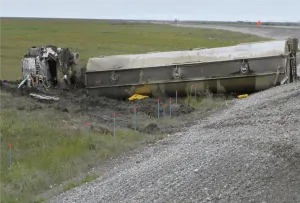
Insurance clients submit notice to the insurance company that an environmental issue occurred or was discovered which requires investigation and corrective action. The onus is on the client to provide sufficient information to substantiate a claim submittal. The insurance company reviews this information in their evaluation of coverage for the issue under the policy.
When a new claim is submitted to the insurance company, the client must provide information that substantiates that an issue exists and that further investigation and corrective action is required. Often their substantiation consists of the initial technical details about the nature and extent of the environmental problem. Claims analysts generally have a strong legal background but may lack technical environmental expertise; this is when insurance support services become valuable. The following paragraphs summarize each step in the process and how SCS insurance support assists claims analysts through the process.
Once the insurance company receives a notice of claim, they determine whether the client’s policy provides coverage for the specific issue or event that constitutes the claim. A claims analyst evaluates the specifics of the claim to determine if the associated details and circumstances fall within the specifics of the client’s policy. If so, coverage is usually accepted. If not, coverage is generally denied.
SCS’s role is to provide an evaluation of the technical aspects of the claim so that the claims analyst can take the distilled facts and compare them against the specifics of the policy; often called a “Source and Timing” evaluation. Take, for example, an underground storage tank (UST) release at a gasoline station. In this example, free product (gasoline) is observed in an on-site monitoring well where no free product has previously or recently been identified.
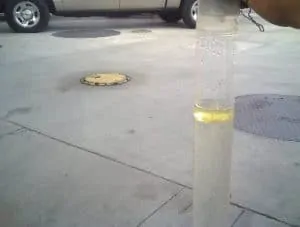
The station owner or their environmental consultant reports the apparent new release to the regulator, and a confirmed discharge is recorded. The property owner than notifies the insurance company of a gasoline release to the environment.
As part of the “Source and Timing” evaluation, SCS’s insurance support reviews tank system leak detection and inventory records, tank system tightness testing records, previous groundwater monitoring data, reports of any earlier releases at the facility, and any other information or data about the facility and the subject release. The goal is to identify:
If enough information is available to make these determinations, then the claims analyst compares the SCS report to the coverage specifics and exclusions included in the policy; determining if the event is covered. The claims analyst will usually try to make a coverage determination on their own if the facts are relatively straightforward, but often that is not the case, and the assistance of insurance support services is necessary.
This process can be straightforward, such as in the case of a tanker truck rollover or industrial facility chemical spill, but is often more complicated when insufficient information is available to make a source and timing determination. In the latter case, the claims analyst issues a Reservation of Rights letter, stating that the insurer is not accepting or denying coverage at this time as the circumstances of the claim are still under evaluation and investigation.
Claims can be denied if the incident occurs before or after the policy period; if the source or type of incident are not included or are specifically excluded under the policy; or if the incident occurred because of the client’s negligence. If coverage is denied no further actions are generally necessary on the part of the insurance company. Whether a claim is accepted or denied is often more complicated than what we’ve discussed here.
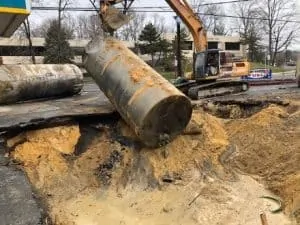
The claim is accepted; undoubtedly good news for the client. What happens now is that the claim becomes “Active,” requiring among other things for the claims analyst to set reserves. A reserve is an estimate of what the claim is going to cost the insurance company. Your insurance support consultant can provide a rough approximation of the estimated costs to achieve regulatory closure, which includes all expenses incurred from investigation through remediation, post-remediation monitoring and reporting.
Early in the life of a claim, these are preliminary estimates that are refined as a project progresses, often requiring the claims analyst to adjust their reserves; important to the insurance company as future reserves impact financial forecasts. Insurance support services will develop the cost-to-closure estimate based on all available information and data, as well as their professional experience on similar projects. The insurer wants the most experienced environmental consultants and engineers on the case because their estimates are more likely to be on target and identify potential regulatory issues or risks.
From the insurer’s standpoint, the primary goal is to maintain a high level of responsiveness to their clients and process requests for reimbursement against the claim. The role of your insurance support team can continue by managing quality control and evaluation of site-specific activities; ensuring that the investigation and cleanup are reasonable and appropriate given the environmental conditions at the site, all applicable regulatory requirements, and costs consistent with industry standards for recovery. The client and their environmental consultant are required to provide the insurer and the insurance support consultant documentation of the work as follows:
Over the life of a claim, insurance support may correspond with the project consultant on behalf of the insurer, conduct site visits, and be asked to participate in meetings, conference calls, and mediations. The overall goal of your insurance support consultant is to assist claims analysts in closing a claim in the most time-efficient, cost-effective manner possible within all regulatory rules and guidelines.
Once an active claim−environmental project has achieved regulatory closure, the claims analyst begins the administrative process of closing the claim. From SCS’s insurance support standpoint, all that remains is to obtain the appropriate documentation from the regulator confirming that the subject project is approved for closure and that no further actions are required.
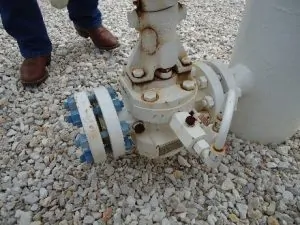
There are other circumstances which may result in closing a claim, such as exceeding the maximum total cost that can be paid out by the policy, non-compliance with policy requirements, or new information coming to light which results in a change in coverage position by the insurer. In some cases, such as when there is a change in coverage position or the cause of the issue can be attributed to a third party equipment failure, the insurer may seek to recover costs expended from the client and third-party policies. That process, called subrogation, may require the expertise of your insurance support specialist and at times their testimony as an expert witness.
There are several ways that SCS helps our insurance clients and other clients. The involvement of insurance companies is becoming more pervasive throughout environmental consulting and engineering in all business sectors. The combination of SCS’s industry expertise, contacts associated with our insurance support services, and our Federal, State, and local level regulatory expertise brings more knowledge and efficiency to each project. SCS offers a wide range of engineering and environmental services, a national presence, and a positive established industry reputation.
Our clients appreciate being able to draw upon our insurance-related expertise to assist them with their submittals, interpreting insurance requirements, and liaising with insurance companies as part of our core capabilities.

Mr. Michael Schmidt is an accomplished industry leader with nearly 30 years of progressively responsible experience in the environmental consulting and environmental insurance industries. He has specific expertise focusing on the evaluation of environmental risks and liabilities associated with insurance claims and underwriting, site investigation and remediation, due diligence, and project management.
Feel free to use our website to share our blogs, whitepapers, case studies, events, and news. SCS respects your privacy.
On October 19, 2018, the Treasury issued proposed guidance related to the new Opportunity Zone tax incentive created by the 2017 Tax Cuts and Jobs Act. Opportunity Zones are communities where new investments may be eligible for significant tax incentives. The incentive is designed to spur economic development and job creation.
New tax code Section 1400Z-1 provides the rules for designating Opportunity Zones and Section 1400Z-2 allows a taxpayer to elect to defer certain gains based on timely investment in Qualified Opportunity Fund (QOF) and excludes post-acquisition gains on investments in QOFs held for at least 10 years. The proposed guidance under Section 1400Z-2 addresses the gains eligible for deferral, types of taxpayers who are eligible, the type of eligible interest, the timeframe to invest in the QOF, and the requirement to include previously deferred gains. The proposed regulations also provide rules for self-certifying as a QOF, valuation of QOF assets (90% test), and guidance on qualified businesses. The proposed rule would permit an investor making an investment as late as the end of June 2027 to hold the investment in the QOF for the entire 10-year holding period plus another 10 years through 2047.
In a nutshell, the new law allows a taxpayer who would otherwise owe capital gains tax on an investment to roll-over the proceeds into an Opportunity Zone and thereby defer (or eliminate) capital gains taxes provided certain conditions are met. As many of the Opportunity Zones will be designated in areas containing Brownfields redevelopment opportunities, SCS expects many of our clients will be interested in this opportunity to do well by doing good. If you are interested in investing in a potential brownfield site, contact SCS Engineers to help you evaluate and manage environmental concerns associated with your site. Visit www.scsengineers.com to learn more.
The following are links to the press release and proposed guidance:
https://home.treasury.gov/news/press-releases/sm530
https://www.irs.gov/pub/irs-drop/reg-115420-18.pdf
The Treasury plans to present additional guidance before the end of the year, and a public hearing is scheduled for January 10, 2019. Taxpayers may submit comments by 60 days (around the third week in December 2018) after the publication of the proposed guidance in the Federal Register at www.regulations.gov. Additional guidance is expected to include the meaning of “substantially all”; transactions that may trigger the inclusion of gain that has been deferred; the reasonable period for a QOF to reinvest without paying a penalty; administrative rules regarding the investment standard; and, information-reporting requirements. SCS will provide an update when the additional guidance becomes available.
For additional information, you may contact SCS Engineers at or the blog Author, Christine Stokes.
Additional Resources:
Duluth, GA – SCS Engineers, a leader in environmental and solid waste engineering, recently relocated from Alpharetta to a larger, more strategically located office in Duluth, Georgia. The new office supports SCS’s continued development in the Southeast, our client success-driven growth, and accommodates our growing professional staff.
SCS is always on the lookout for talented senior level professionals in the environmental consulting community. The Atlanta Environmental Services (ES) group is seeking experienced, humble, hungry, and smart senior level consultants with client relationships and business development capabilities to join our team.
SCS Engineers – Atlanta
3175 Satellite Blvd
Building 600, Suite 100
Duluth, GA 30096
(678) 319-9849
If you are interested or know anybody who is interested, reach out to . You may also review our open positions on the SCS Careers Page.
Landfill Sites are Finding Second Lives as Real Estate Properties
Innovative projects have sprung up over the years that house retail, apartments, golf courses, conference centers and hotels. Engineers in the solid waste space are applying several structural design techniques that other industries have leveraged for years like building on piles, which has historically been done on marshlands and other unstable ground. They’re also designing floating foundations that allow for movement and making adjustments when differential settlements happen.
Over the years, SCS has designed landfill-related systems for dozens of projects, mainly apartments, business complexes, entertainment complexes, hotels, parks and golf courses. In the past three years,SCS has fielded calls from developers looking into options, resulting in projects moving into the development stages. From small to the largest landfill redevelopment project in the nation , this article gets you started and leads to more information.
It is challenging to restore properties with a past, but you can do it on time and on budget if you plan ahead to address contaminated historic fill. Follow these tips and use the brownfield redevelopment checklist to keep your next redevelopment on track.
Design Phase
Consider how contaminated historic fill impacts the following:
Site feature locations – You can reduce or even eliminate landfill disposal costs by carefully selecting locations for your building, underground parking, parking lot, utility, and green space.
Storm water infiltration – Do you know that storm water infiltration devices must be located in areas free of contaminated historic fill? Infiltration devices cannot be located where contaminants of concern (as defined in s. NR 720.03(2)) are present in the soil through which the infiltration will occur.
Subslab vapor mitigation system – Already know you have contaminated historic fill on site? Consider adding a subslab vapor mitigation system to the design of your new building. It is usually much cheaper to install this system in a new building than to retrofit one into an existing building. It can also mitigate radon gas.
Planning & Design
Determine if contamination requires the following plans to manage the construction phase:
Material management plan – It establishes how you will separate excavated contaminated material from material that is not contaminated. It also outlines how you will handle contaminated material, either by disposing of it off site in a landfill or reusing it on site in an approved area such as a paved parking lot. This plan also covers screening, sampling, and testing contaminated materials, if required.
Dewatering plan – If the development requires excavation through contaminated historic fill to depths below groundwater, you will need a dewatering plan to properly manage discharge of the water. You may be able to discharge the water to the storm sewer or the sanitary sewer depending on the type and concentration of contaminants. You must determine local and state permit requirements before implementing your dewatering plan.
Demolition plan – The demolition plan for removing existing structures during redevelopment should include handling, removal, and disposal of potential contaminants such as lead and asbestos. The demolition plan should also address recycling and reuse of existing on site materials like concrete. You may be able to save money by crushing and reusing concrete on site as fill material, or by hauling and crushing it off site to reuse it as fill at another property. This approach can save you considerable money compared to landfill disposal.
Ready to start saving time and money addressing contaminated historic fill at your next redevelopment? Contact Ray Tierney for help evaluating your options in the Upper Midwest, or using the SCS Brownfield Redevelopment Checklist .
Live in another part of the country? SCS Engineers offers brownfields, remediation, due diligence, and all appropriate inquires services nationwide. Contact us today at .
Learn more about these services at SCS Engineers; read our case studies and articles:
Brownfields and Remediation
Due Diligence and All Appropriate Inquiries
Creosote is a toxic chemical that has been commonly used as a wood preservative for over 50 years. It acts as a pesticide, herbicide, and fungicide and has been used widely in both land and marine applications.
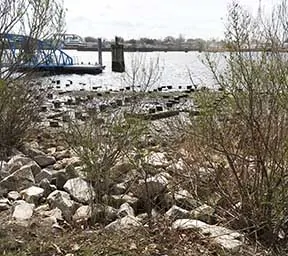
Studies have indicated that pilings and other artificial structures provide possible environmental benefits, such as habitat for invertebrates, roosts for birds, and a spawning location for certain fish species (e.g., herring). However, far more studies have indicated potential harm from treated structures. It is documented that pilings will leach the most during the first two years after installation after which leaching declines significantly.
The Norfolk Riverfront area has been developed since at least 1887, and the use of treated pilings can be presumed. The majorities of the pilings are presumed to
have been installed over two years ago and are therefore beyond the 2-year timeframe for significant leaching. Pilings that are shown to be in good condition and with a viable use as part of the development effort can remain in place with little effect on the surrounding environment.
This paper discusses the City of Norfolk’s waterfront brownfield redevelopment and the importance of understanding and developing an approach for the managed disposal of creosote pilings. The guidance is based on strategies approved by the U.S. Environmental Protection Agency and other noted expert sources such as waterfront municipalities, published white papers, and peer-reviewed publications.
Take me to the paper and information about the authors.
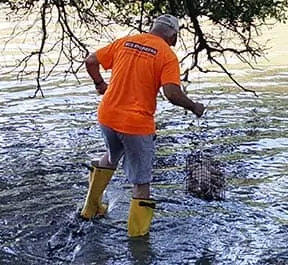
Other environmental groups are hard at work in the region. Lynnhaven River NOW, is one organization working with residents, businesses, and community leaders who are restoring and protecting Virginia Beach waterways.
Learn more here: http://www.lynnhavenrivernow.org/
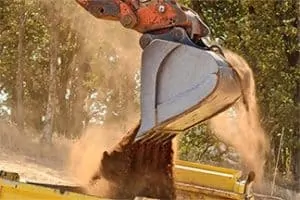
Circumstances sometimes dictate that a licensed landfill is your only option, but Wisconsin’s solid waste laws allow you to dispose of some types of contaminated soil at other locations if the soil qualifies as low risk. Alternative options are available through an exemption process outlined in Wisconsin Administrative Code Chapter NR 718.
Who Can Apply for an NR 718 Exemption?
Except for required actions when contamination is first discovered, the Wisconsin Department of Natural Resources (WDNR) must pre-approve exemptions.
Know the Rules Before You Apply
Additional information and answers to your compliance questions are available by contacting an SCS professional. In Wisconsin, contact Ray Tierney or Betty Socha. Are you ready to take control of your environmental compliance costs? Contact me or Betty Socha to learn more about how you can save money on soil disposal at your next project.
To learn more about compliance options for contaminated dirt disposal, remediation, and construction options in other states contact or visit the SCS website services page.
Related Services and Compliance:
Brownfields and Voluntary Remediation
Environmental Due Diligence and All Appropriate Inquiries
San Diego County is in the midst of an affordable housing shortage — and more units could be lost as government-aided housing agreements expire over time. And the state of California isn’t fairing much better based on a report released by the California Housing Partnership Corporation. BRIDGE Housing, a firm formed in 1983 to address the affordable housing shortage, is doing their part to fill the gap.
One of their recent developments, COMM22, is a mixed-use, mixed income, transit-oriented development located at Commercial and 22nd streets. The development combines much-needed affordable family and senior rental housing with day care facilities, commercial and retail space, affordable townhomes that are currently under development, and future market-rate flats.
Join an esteemed panel of redevelopment and land reuse experts for a practical and interactive workshop that will provide project managers, real-estate developers and investors, the public sector, and allied professionals with the tools, techniques, and funding resources required to bring projects in on time and on-budget.
The Center for Creative Land Recycling is offering a free half-day workshop and walking tour in Vista, CA focused on fostering economic development and creating vibrant communities through land reuse. The workshop focuses on economic development through infill and reuse of underutilized and potentially environmentally challenged properties, such as brownfields, to create stronger economies. Come and learn how to jump-start your community’s redevelopment programs.
Then, end your day with an urban brew-newal tour of brownfields that were redeveloped as affordable housing and breweries.
May 23, 2017, 1:00 pm – 4:00 pm
Vista Public Library
700 Eucalyptus Ave.
Vista, CA 92084
To register: Click Here